The Science Behind Spicy Food and Why We Love It
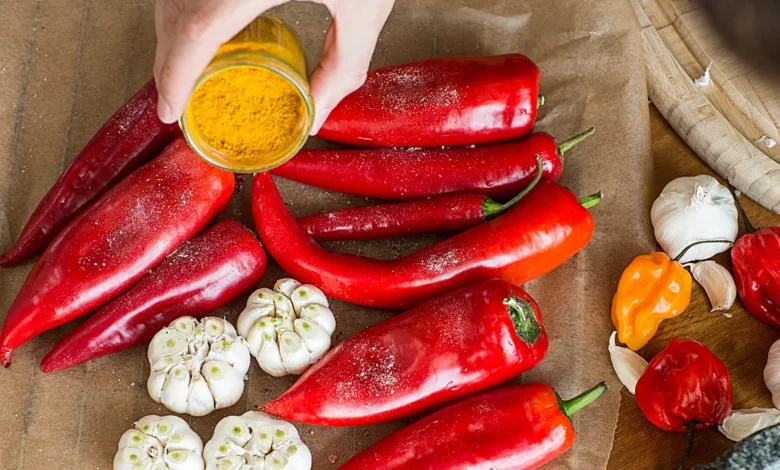
The Appeal of Spicy Food
Spicy food has a way of igniting our taste buds and sparking joy in culinary experiences. It’s not just about the heat but the explosion of flavors that come with it. For many, the thrill of biting into a spicy pepper or tasting a fiery salsa offers a rush. Consider a time when a group of friends gathered around a table of spicy dishes. As they laughed and passed around plates, some reached for a particularly hot curry, daring each other to take a larger bite. At that moment, the appeal was about companionship, adventure, and the shared experience of love for spice. Here are some reasons why spicy food stands out:
- Flavor Diversity: Spices can elevate simple dishes, adding depth and complexity.
- Cultural Identity: Many cuisines around the world embrace spice as a hallmark of their identity, from Indian curries to Mexican salsas.
- Sensory Experience: The sensory overload provided by capsaicin, the compound found in peppers, can be exhilarating.
Brief History of Spicy Cuisine
The love for spicy food has deep historical roots, spanning across continents and cultures. Spice trade dates back thousands of years, connecting countries and fostering culinary innovation.
- Ancient Civilizations: Early Egyptians, Romans, and Chinese were known to utilize spices both for flavor and preservation.
- Trade Routes: The Silk Road and other routes played pivotal roles in the dissemination of spices, affecting local cuisines.
Many people today enjoy the vibrant flavors associated with spicy food, but it’s fascinating to trace how far these traditions have come, transforming individual cuisines and integrating them into the global palate. As we explore the diverse world of spicy food, one can appreciate not only its flavors but also its rich historical tapestry.
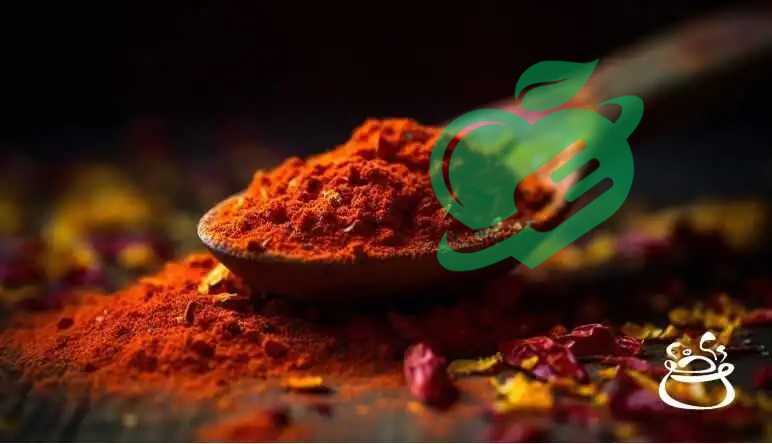
Spicy Foods: The Science Behind the Spices
Capsaicin and its Effects
At the heart of what makes spicy food spicy is capsaicin. This compound, primarily found in chili peppers, is responsible for that familiar burning sensation. But what exactly does capsaicin do? When capsaicin interacts with our taste buds, it binds to receptors that send signals to our brain, which interprets these signals as heat. It’s almost like a game of tag; the brain is constantly trying to register the heat while we simultaneously crave that thrilling kick! Here’s why capsaicin is interesting:
- Pain Relief: Surprisingly, capsaicin is used in topical ointments for pain relief. It helps reduce substance P, a neurotransmitter responsible for sending pain signals.
- Metabolic Boost: Studies suggest that capsaicin might increase metabolism, leading to enhanced calorie burning.
- Mood Enhancer: Spicy food can trigger the release of endorphins, often making people feel happier after a fiery meal.
How Spicy Heat is Measured ?
Now, how do we quantify that fiery kick? The spicy heat of peppers is measured using the Scoville Scale, named after pharmaceutical chemist Wilbur Scoville. Imagine diving into a world of numbers:
- Mild: Bell peppers have a score of 0 on the scale.
- Moderate: Jalapeños can range from 2,500 to 5,000 SHU (Scoville Heat Units).
- Fiery: Habaneros can reach 100,000 to 350,000 SHU.
- Extreme: Carolina Reaper, one of the hottest peppers, clocks in at a staggering 1,400,000 SHU!
Understanding capsaicin and the Scoville Scale helps spice lovers gauge their preferences when ordering from a “spicy food near me” menu. Whether you’re adventurous or cautious, there’s always a perfect level of spice to discover.
Read also: Sweat It Out: How Saunas Can Improve Your Well-Being

Why Do We Love Spicy Food?
Have you ever noticed how an exhilarating bite of spicy food can make you feel energized? This delightful sensation arises from the chemistry of pleasure. When you indulge in spicy dishes, your body releases endorphins and serotonin, those feel-good hormones that elevate mood and can even create a mild euphoric state. Here’s how it works:
- Endorphin Release: Capsaicin triggers a pain response, prompting your brain to produce endorphins, which serve as natural painkillers and mood lifters.
- Heat Tolerance: Over time, your body may grow to enjoy that initial discomfort, turning it into a source of excitement instead.
Many spice enthusiasts recount stories of their first encounter with heat, where they faced red cheeks and sweaty brows, but ultimately craved more. It’s almost like a rite of passage in the culinary world.
Evolutionary Theories
Evolutionary theories also play a fascinating role in why we gravitate towards heat. Early humans may have discovered that consuming spicy foods helped ward off harmful bacteria and pests. This beneficial side effect created a preference for spicy ingredients in different cultures. Here are a few points to consider:
- Food Preservation: Spicy foods are often less prone to spoilage, making them a smart choice for ancient societies.
- Cultural Adaptations: Over generations, many cuisines adapted to include spiciness, leading to delicious, culturally rich dishes.
As we embrace the heat, understanding these facets of our love for spicy food makes dining an even more intriguing experience. From the chemical delights to our ancestral roots, there’s truly more than meets the taste bud!
Read also: Discover the Authentic Flavors of Clove Indian Cuisine

Health Benefits of Spicy Food
Does spicy food burn fat?
Beyond the thrill of flavor, spicy food brings with it a host of health benefits, starting with its ability to boost metabolism. Many spice lovers might be delighted to learn that that fiery kick in their favorite dishes does not just tantalize taste buds but also helps manage weight. The secret lies in capsaicin. Studies suggest that consuming foods high in capsaicin can lead to:
- Increased Caloric Burn: Capsaicin may temporarily elevate metabolic rate after meals, helping the body to burn more calories.
- Fat Oxidation: It can promote the burning of fat, particularly in individuals who regularly consume spicy food.
Imagine enjoying a spicy curry or a hot pepper salsa while knowing you’re potentially giving your metabolism a gentle nudge. It’s an inviting thought for those seeking healthier options!
Pain Relief and Anti-Inflammatory Properties
Moreover, the health benefits of spicy food extend beyond metabolism. Capsaicin, the same compound that adds heat to our dishes, possesses potent pain relief and anti-inflammatory properties. Many people share experiences where spicy foods help alleviate discomfort. Here’s why:
- Pain Relief: Capsaicin is frequently incorporated in topical creams used to treat arthritis, neuropathy, and muscle pain. It works by depleting the neurotransmitter substance P, which is responsible for sending pain signals to the brain.
- Anti-Inflammatory Effects: Regular consumption of spicy foods may help reduce inflammation in the body, which is linked to various chronic health issues.
So, whether it’s enjoying a spicy meal shared with friends or finding relief from minor aches, this dynamic ingredient provides flavorful benefits that can enhance overall well-being. Embracing spicy food isn’t just a sensory delight; it’s a flavorful pathway to better health!

Cultural Significance of Spicy Food
The world is brimming with a rich tapestry of spicy cuisines, showcasing how different cultures embrace heat in their culinary traditions. When exploring these regional variations, one can appreciate the unique characteristics that define them. For instance, consider how spice plays a central role in these distinct cuisines:
- Indian Cuisine: Known for its intricate blends of spices and heat, dishes like curry and vindaloo are perfectly curated to tantalize the palate.
- Thai Cuisine: Utilizing fresh herbs and chilies, dishes such as Tom Yum and Green Curry offer not just heat, but a medley of flavors and aromas.
- Mexican Cuisine: Salsas, mole sauces, and spicy tacos incorporate ingredients like jalapeños and habaneros, making every bite an explosion of heat.
These regional variations are not simply about spice; they reflect local ingredients, historical influences, and cultural preferences that define each cuisine’s identity.
Read also: Sumac: The Forgotten Spice with Unique Flavors
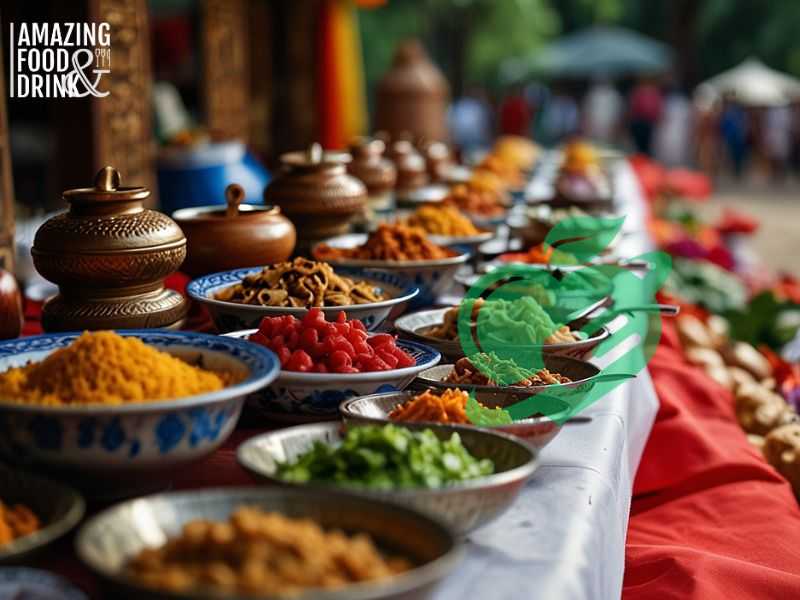
Rituals and Traditions around Spicy Dishes
Moreover, spicy foods often carry significant cultural weight, encompassing rituals and traditions that add depth to their enjoyment. Many cultures integrate spicy cuisine in festive occasions and communal gatherings.
- Celebrations: In Mexico, spicy dishes like tamales and enchiladas are commonly prepared during holidays, bringing families and communities together.
- Spicy Challenges: In some regions, spicy food challenges, such as eating the hottest pepper, become festive events, promoting camaraderie and bravery.
Reflecting on personal experiences, many might recall family gatherings where a beloved spicy recipe is shared. The laughter, storytelling, and even the lighthearted tears from the heat forge communal bonds. These cultural significance and traditions allow people to connect not only with the food but also with each other, as the warmth of spice symbolizes more than just heat — it embodies heritage, celebration, and togetherness. Embracing this fiery flavor opens doors to understanding diverse cultures through the universal love of deliciously spicy food!
Explore different levels of spice in hot foods.
Mild to Wild: Scoville Scale
As we delve deeper into the world of spicy food, it’s essential to understand how we categorize levels of heat. Enter the Scoville Scale, developed by Wilbur Scoville in 1912, which measures the pungency of chili peppers and other spicy foods based on their capsaicin content. Here’s a handy breakdown of the Scoville ratings:
- 0-100 SHU (Scoville Heat Units): Mild peppers, like bell peppers, bring no heat at all, making them perfect for those new to spice.
- 100-2,500 SHU: Peppers like Anaheim and Poblano offer a gentle warmth, ideal for adding a bit of flavor without overwhelming heat.
- 2,500-30,000 SHU: Think jalapeños and serranos; this range tantalizes the tongue while still being manageable.
- 30,000-300,000 SHU: Hot varieties like habaneros and Scotch bonnets pack a punch that can ignite flavor lovers’ passion.
Many spicy food enthusiasts revel in trying peppers that land high on the scale, excited to test their limits, much like a friendly competition amongst friends.
Tolerance and Acquired Taste
Over time, many individuals discover that their tolerance for spice gradually increases. What once sent them reaching for milk may eventually become a sought-after thrill. This shift can often be attributed to an acquired taste for heat, a fascinating process that intertwines biology and experience.
- Building Tolerance: Regular exposure to spicy food can desensitize pain receptors, allowing individuals to enjoy hotter dishes without discomfort.
- Flavor Appreciation: Initially harsh heat may transform into a delightful embrace of flavors that complement delicious meals.
Consider a time when someone first tried a spicy dish, perhaps with sweaty palms and racing hearts. Fast forward, and they are now the ones advocating for more heat at the dinner table! Understanding these nuances of spice allows food lovers to explore culinary experiences that are personal and enthralling. Whether it’s mild for newcomers or wild for seasoned spice lovers, there’s a perfect heat level waiting to be discovered!
Read also: 4 benefits of hot pepper for the health of the human body
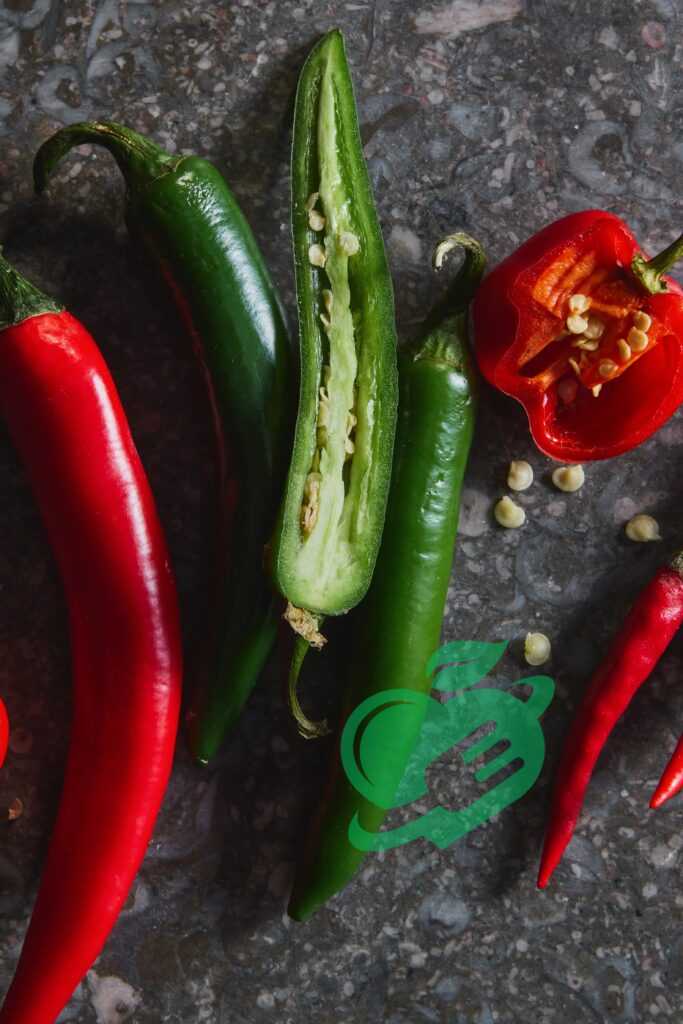
Enhance flavors with spicy foods.
Cooking with spices opens a world of possibilities, especially when it comes to enhancing flavors with heat. Spice can transform a mundane dish into an exciting culinary adventure, providing depth and complexity that elevates the entire meal. For instance, think about a simple vegetable stir-fry. By adding just a pinch of crushed red pepper flakes or a dash of chili oil, you can turn it into a vibrant dish that excites the taste buds. This ability to enhance flavors can be attributed to spices’ unique profiles, which engage our senses in ways that plain ingredients often cannot. Consider these key points when working with spices:
- Layering Flavors: Incorporate spices at different stages of cooking for a more complex flavor. For example, add cumin at the beginning to build a foundation, then finish with fresh cilantro for a burst of freshness.
- Balancing Act: Heat can elevate a dish, but it’s essential to balance it with other elements. Sweetness or acidity, such as a splash of lime juice, can beautifully counteract the heat.
Tips for Adding Spice to Your Dishes
Ready to spice things up in your kitchen? Here are some practical tips for adding heat to your dishes:
- Start Small: If you’re unsure about spice levels, start with a small amount. You can always add more, but it’s harder to tone down the heat once it’s in the dish.
- Experiment with Ingredients: Combine different spices to find unique flavor profiles. For example, pairing paprika with cayenne pepper can yield a delightful smoky heat.
- Use Fresh Ingredients: Fresh peppers can add a vibrant kick that dried spices may not replicate. Whether it’s jalapeños or serranos, feel free to explore!
By harnessing the power of spices, home cooks can create memorable meals that encourage trial and creativity in the kitchen. Whether you’re a seasoned chef or just starting, the world of spicy cooking invites everyone to explore and enjoy. Your taste buds will surely thank you for it!
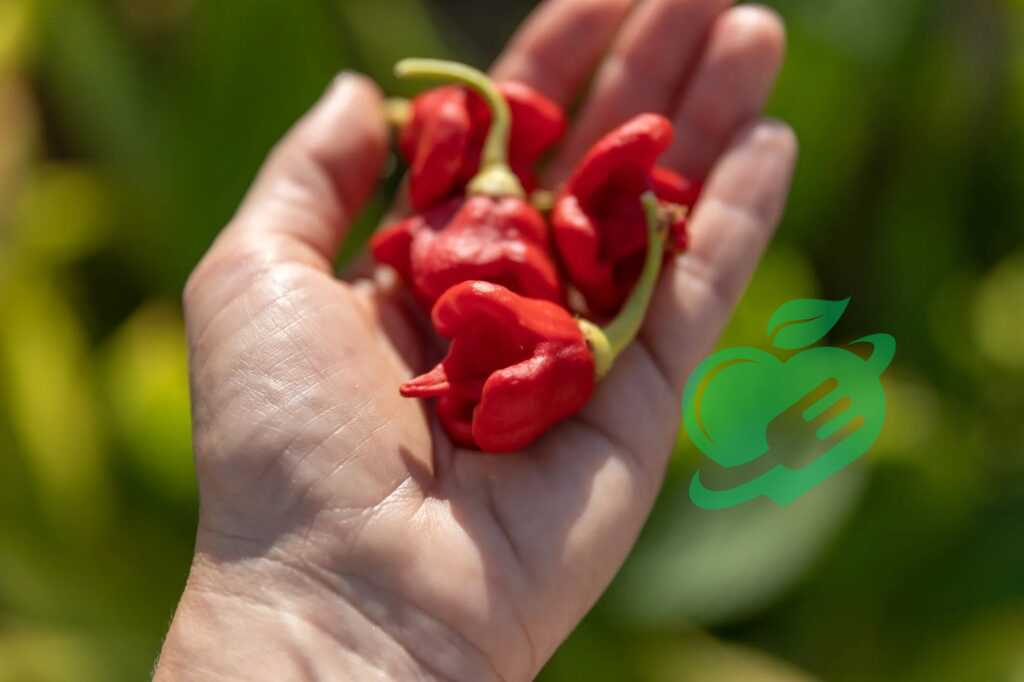
Heat management spicy foods
Cooling Tactics
Even the most dedicated spice enthusiasts sometimes find themselves in over their heads with fiery dishes. Thankfully, there are several effective strategies to manage the heat, allowing you to enjoy the flavors without feeling overwhelmed. One of the most popular cooling tactics is to reach for dairy. Whether it’s milk, yogurt, or sour cream, the fat content in these products helps to soothe burning sensations. For example, a cooling cucumber raita served alongside spicy curry can provide much-needed relief. Here are some other helpful tactics for cooling down:
- Sweetness: A touch of honey or sugar can neutralize sharp heat. Sweet ingredients also have a way of enhancing the overall flavor profile.
- Acidic Ingredients: Adding a squeeze of lime or lemon juice can help cut through the heat, balancing flavors while providing your dish with a refreshing zing.
- Starchy Sides: Consider serving spicy dishes with a side of rice or bread. These starches can absorb some of the heat, making each bite more manageable.
Balancing the flavors of spicy foods
In addition to cooling tactics, it’s essential to focus on balancing flavors when cooking with spice. The goal is not just to introduce heat, but to harmonize it with other tastes for a well-rounded dish. Here are some key elements to consider when balancing flavors:
- Saltiness: A sprinkle of salt can amplify flavors, helping to distribute heat evenly throughout the dish. Just be sure not to overdo it!
- Umami: Ingredients like mushrooms, tomatoes, or soy sauce can add depth to your dish, enhancing the overall experience.
- Fresh Herbs: Bright herbs like cilantro, mint, or basil can provide a fresh contrast to spice, creating an inviting and complex flavor profile.
As you cook, remember that managing the heat is an art. With the right techniques and a focus on balancing flavors, you can create dishes that are not only spicy but also deliciously enjoyable. So, embrace the heat, and let your culinary creativity flourish!
Read also: Pregnant and Craving Spice: How to Safely Indulge Your Tastebuds

The Allure of Spicy Food
As we’ve journeyed through the vibrant world of spicy food, it’s clear that its allure extends far beyond mere taste. The excitement that comes from indulging in a fiery dish can evoke feelings of nostalgia, adventure, and connection. For many, a memorable meal is often marked by shared laughter and the fiery challenge of who can handle the heat. Consider the gatherings where bowls of spicy salsa are passed around at summer barbecues, or how a steaming spicy curry calls family members to the dinner table. These moments create bonds, filling the air with the smell of wonderful food and stories, laughter, and camaraderie. Here are a few compelling reasons why spicy food holds such a powerful grip on our culinary hearts:
- Cultural Exploration: Every spicy dish offers a glimpse into different cultures’ rich traditions and histories.
- Health Benefits: From boosting metabolism to offering pain relief, the health perks of spices enhance their appeal.
- Sensory Experience: The sensations triggered by spice—heat, flavor, aroma—are unique and enticing.
Frequently asked questions
What are some good spicy foods?
1- Sichuan hot pot
2- Vindaloo
3- Jerk chicken
4- Kimchi-jjigae
5- Phaal curry
6- Green spicy Chicken
7- Neua pad prik
8- Tom yum soup 1
Is it good or bad to eat spicy food?
In general, foods that are spicy and contain capsaicin are beneficial for health, but personal preference and tolerance levels play a significant role. If you find it challenging to handle intense spices, you can choose milder options like paprika or mild chili powder and still enjoy some health advantages.2
Can spicy food make you dizzy?
It can also lead to circulatory symptoms like cold sweats, fluctuations in blood pressure, or dizziness when taken in high doses, it adds. 3
Why does spicy food hurt the stomach?
Chilies and peppers have a mix of acids that can irritate the stomach lining when eaten in large quantities. In the short term, this can lead to symptoms such as stomach pain, discomfort in the throat and esophagus, indigestion, bloating, and diarrhea. 4
Is spicy food good for skin?
Spicy foods frequently have acidic lycopenes, which can irritate your skin, disrupt your pH levels, and lead to breakouts. Reactions may vary from person to person, but you might want to reduce your intake of spicy foods to help prevent acne. 5
Your body is a mirror of what you eat, so make your food your source of strength and health. Choose with love and awareness what nourishes your body and soul, and be a friend of nature and its colors on your plate, because proper nutrition is the key to a life full of energy and wellness. Follow us constantly, as we strive to provide more useful articles and reliable information that make a difference in your daily life and help you achieve your health goals.
For medical matters
- edition ((↩))
- bbcgoodfoodme ((↩))
- BBC ((↩))
- mountelizabeth.com ((↩))
- marquemedical ((↩))



